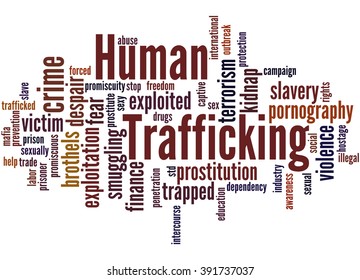Safe Refuge or Unseen Opportunities: How Libraries Can Fight Human Trafficking
Libraries are revered as open to all regardless of background or appearance. Yet, within their walls, a sinister reality can lurk, human trafficking. Traffickers can exploit the library’s open access and resources to target, groom, and control victims. They can also hunt for potential customers and victims within the library as they move about freely. Learning to recognize and how to react when these creatures of evil are discovered is vital for those in public service roles. Recognizing and eliminating this vulnerability is crucial to upholding libraries’ role as safe havens, not conduits, for all. We’ll be going into more detail with each of the below sections in separate posts, but I wanted to have a quick review before we delve into it more.
 Awareness
Awareness
Traffickers often blend into the library environment, making it difficult to detect their activity. Recognizing the tactics they employ is the first step in prevention:
- Targeting: Traffickers prey on vulnerable individuals:
- Youth seeking internet access, social interaction, or escape from difficult situations.
- Runaways or homeless individuals in need of shelter and resources.
- Immigrants unfamiliar with local resources and language.
- Grooming: Once identified, traffickers build trust and dependence through:
- Offering friendship, mentorship, or false promises of opportunity.
- Providing gifts, snacks, or small amounts of money.
- Isolating victims from family and friends.
- Control: Traffickers wield dominance through:
- Threats of violence, deportation, or legal repercussions.
- Confiscation of identification documents or money.
- Emotional manipulation and psychological abuse.
Beyond Vigilance
Library staff members are not law enforcement, but they play a critical role in identifying and responding to potential trafficking situations. Proactive measures include:
- Staff Training: Educating staff on the signs of trafficking, grooming tactics, and reporting procedures empowers them to recognize and act on red flags.
- Clear Policies and Procedures: Having a solid protocol in place for handling suspected trafficking situations ensures a coordinated and effective response.
- Partnerships: Building relationships with law enforcement, social services, and anti-trafficking organizations creates a safety net for victims and facilitates swift action.
- Safe Spaces: Designated areas within the library where vulnerable individuals can feel secure and seek help from staff can act as a deterrent to traffickers.
Encountering a Victim or Perpetrator
If a library staff member suspects trafficking, the primary focus is on ensuring the victim’s safety and well-being. Here’s what to do:
- Prioritize Safety: Do not directly confront the suspected perpetrator or put yourself at risk.
- Subtle Interactions: Engage the victim carefully and privately, offering support and a safe space to talk.
- Active Listening: Listen attentively without judgment and avoid making promises you cannot keep.
- Connect to Resources: Guide the victim towards trusted individuals or organizations specializing in trafficking support.
- Confidentiality: Maintain discretion to protect the victim’s safety and avoid alerting the perpetrator.
- Report Suspicions: Contact law enforcement or the National Human Trafficking Hotline (1-888-373-7888) with any observed suspicious activity.
Remember, library staff are not expected to be law enforcers, but informed observers. Their attentiveness and understanding of the risks can create a powerful shield against human trafficking. Thus transforming libraries from potential vulnerabilities into spaces of hope and support for the most vulnerable.
Sources and Further Information:
- United Nations Office on Drugs and Crime (UNODC): https://www.unodc.org/unodc/human-trafficking/
- Polaris Project: https://polarisproject.org/
- National Human Trafficking Hotline: https://humantraffickinghotline.org/en/contact
- International Labour Organization (ILO): https://www.ilo.org/global/standards/subjects-covered-by-international-labour-standards/forced-labour/lang–en/index.htm
- Library Journal: https://www.libraryjournal.com/ (Article: “Human Trafficking and Libraries: What You Need to Know”)
By raising awareness, implementing proactive measures, and responding with care, libraries can play a pivotal role in dismantling the insidious web of human trafficking.

